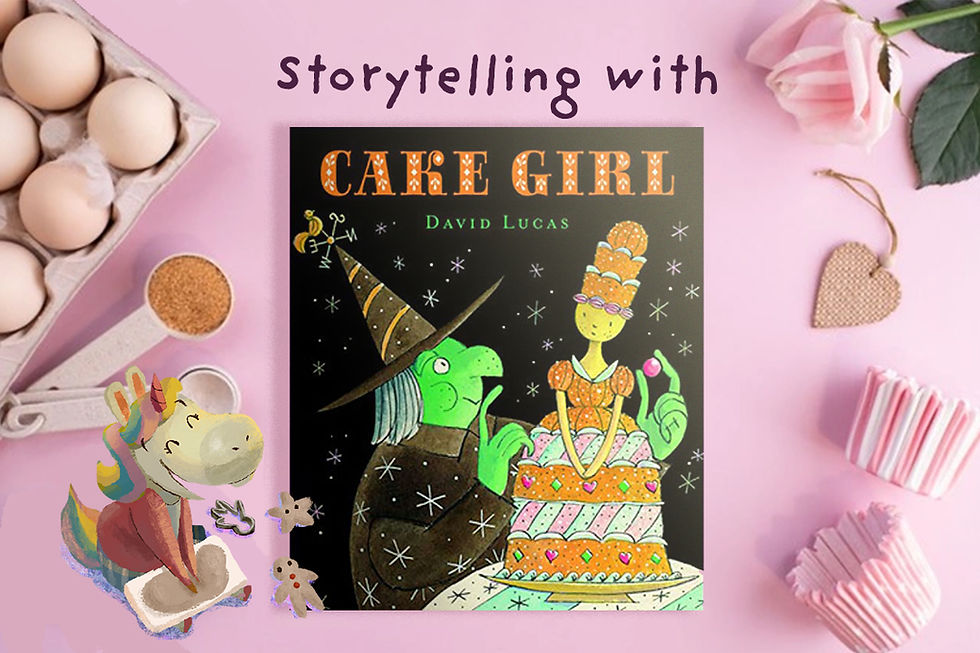How Technology Has Transformed the Art of Storytelling for Children
- Me Books Community
- Aug 30, 2018
- 4 min read
From cave paintings and hieroglyphics to folklore and fables, stories are woven into the fabric of humanity. We have been telling stories for centuries to impart values, teach lessons, and pass on our legacy and the legacy of others. Stories help us carve our space in this world and etch ourselves into history and culture. And it is through stories that we feel, relate to others, bond with each other, and share our experiences.
Stories have always been an essential component of childhood, no matter where the child lives or what language they speak. Fairy tales, for instance, started as an oral tradition and began thousands of years ago, though there is no definitive answer as to when they were incepted.
Researchers at universities in Durham and Lisbon say that Jack and the Beanstalk can be traced back to more than 5,000 years ago, while Beauty and the Beast as well as Rumpelstiltskin are as old as 4,000 years. The term “fairy tale” comes from the English translation of the term, Conte de Fées, coined by French writer Madame D’Aulnoy in the 17th century.
Storytelling has evolved especially with the advent modern media, and we owe much to technology on how much it has changed the way we tell—and craft—stories. Stories take many forms, and the way stories are told now are multitudinous: we have animated films, games, digital books, audio books, journalism now available online, even social media… The possibilities are endless.
For children and adults alike, Disney is a big part of their lives. Walt Disney pioneered the art of animation, as well as the whole concept of hyper-realistic theme parks (which can be argued as also being a form of storytelling, as each attraction and the whole area thrusts you into the story world).
During a time when the entertainment industry didn’t even know if people would even enjoy or want a feature-length cartoon, Walt Disney pushed the boundaries of animation and created the first sound cartoon in 1928 with Steamboat Willie featuring Mickey Mouse, and then the first ever feature-length animated film in 1937 with Snow White and the Seven Dwarfs. Clearly, Walt Disney’s innovations and use of never-before-seen technological experimentations paid off.
Then, in 1995, Disney made history once again. This time, it was in collaboration with Pixar Animation Studios. Produced by Pixar and Walt Disney Pictures, Toy Story became the first feature-length animated film that was fully computer generated. It was a turning point in the animation industry, having won countless awards and until today remains a well-loved story.
Without technology, there wouldn’t be stories that transcend generations and cultures. With the help of technology, on the other hand, stories have become more accessible than ever, and more children get to spark their imagination and nurture their creativity. Every generation learns and is shaped differently from the previous and the next, and today’s digital natives have much shorter attention spans are significantly more tech-minded than their ancestors. As a result, stories that infuse technology can open doors for children to the world of storytelling, even more so now than ever before.
Today, we have interactive books and audio books, elevating stories to new levels of enjoyment. Interactive books bring stories to life through touch and sound, while audio books engage one’s sense of hearing through the power of the spoken word.
While not everyone is on board with books having digital enhancements or being adapted to digital platforms, there is no denying that technology can take storytelling to a whole new dimension. Children who are visual learners, auditory learners, and kinesthetic learners can all benefit greatly from technologically-enhanced content, as technology allows these young learners to understand better than if they were to just be presented with static, non-interactive content.
Naomi Alderman, a literary novelist and video game writer, argues that with new technologies come new creative ideas, and that art and technology are far more intertwined than we realize. Alderman adds, “in the end these developments do as much to help us recapture the past of storytelling as to invent their future.” Alderman acknowledges the fact that she is often criticized for being a creator of two (seemingly) opposing mediums and styles of storytelling, but the great parts of one form of storytelling does not take away from the great parts of another. In fact, all these different forms of storytelling can and should co-exist and thrive, and even be integrated together.
It seems that with every new era that we cross over, there will always be contestations and debates surrounding something new. Take Socrates for instance, who was very much against writing during a time when oral tradition was the primary means of communication and storytelling. Socrates claimed that people would not be able to remember things by reading the written word as opposed to hearing words being read aloud. Times have changed since then, but suspicions about new developments still, and perhaps will always, exist. Of course, one generation’s “next big thing” eventually becomes another generation’s new normal.
Maybe the focus should not be on whether or not technology is pushing children away from storytelling. Maybe the focus should be on how we can use technology to make storytelling even better, create more stories, and expose ourselves (and other people) to more kinds of storytelling.
As history has shown us, technology actually makes children closer to stories and adds another layer of immersion more than anything. One’s love of storytelling shouldn’t be limited to one medium or one form. Because at the end of the day, the magic of storytelling itself should be something every child gets to experience—whether in traditional ways or in new and innovative ways.
After all, the more the merrier. And there is no such thing as too many stories.





Comments